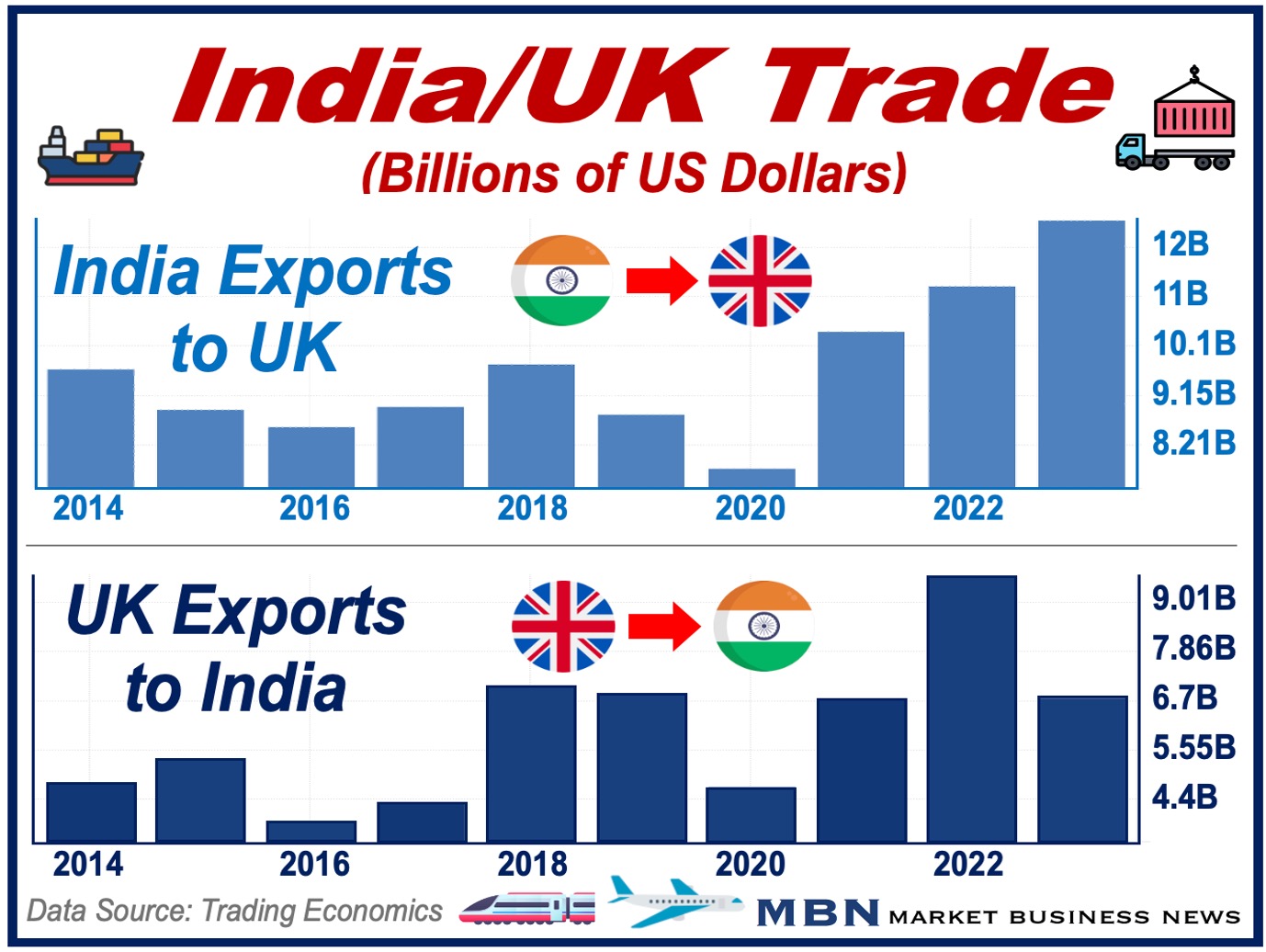The United Kingdom and India are set to restart Free Trade Agreement (FTA) negotiations in early 2025. Both countries aim to strengthen their existing £42 billion (US$52.05 billion – ₹4.48 trillion) annual trade partnership.
The FTA talks had been paused because of elections in both nations. A new agreement is expected to open new opportunities for trade, investment, and collaboration across various sectors.
This renewed focus marks a critical moment for both the UK and India as they seek to deepen ties and address key trade issues.
Here’s what you need to know about the upcoming negotiations and their potential impact.
From Stalled Talks to Renewed Momentum
Negotiations for the FTA began in 2022. However, they were delayed due to political transitions in the UK and general elections in India.
Now, under the Labour-led government in Britain, both sides are eager to resume discussions.
Keir Starmer and Narendra Modi, Britain’s and India’s prime ministers, respectively, met during the G20 Summit in Rio de Janeiro, Brazil. After their meeting, they announced the revival of talks, emphasizing the importance of building a comprehensive strategic partnership.
UK’s Prime Minister Keir Starmer said:
“Boosting economic growth is key to improving living standards for working people. A new trade deal with India will support jobs and prosperity in the UK – and represent a step forward in our mission to deliver growth and opportunity across our country.”
India’s Minister of Commerce and Industry, Piyush Vedprakash Goyal, said:
“We welcome the UK’s decision to relaunch FTA negotiations in the new year.”

What’s at Stake?
The UK and India already enjoy a robust trade relationship, with the UK exporting goods worth GBP 16.6 billion to India annually. India, in turn, aims to expand its exports to the UK, targeting $30 billion by 2030.
This quote about India’s exports to the UK comes from Livemint.com:
“Mineral fuels, machinery, precious stones, pharmaceuticals, apparel, iron and steel, and chemicals form the bulk of India’s exports to the UK, contributing 68.72% of the total export value.”
A successful FTA could lead to:
-
Tariff Reductions
The UK seeks lower duties on products like Scotch whisky, electric vehicles, and confectionery, while India wants better access to its goods and professionals.
-
Increased Jobs and Investment
Economists in both countries say that an agreement will help create more jobs and boost economic growth.
-
Strategic Collaboration
Beyond trade, the FTA is seen as a way to enhance cooperation in security, technology, education, defense, health, and climate change.
Key Challenges Ahead
While the prospects are promising, several hurdles must be overcome:
-
Tariff Barriers
The UK is pushing for reduced tariffs on goods, while India seeks zero customs duty on various products.
-
Immigration and Mobility
India wants easier visa processes for professionals and students, a point that has previously stalled talks.
-
Regulatory Differences
Aligning British and Indian standards for goods and services could prove complex.
-
The Carbon Border Adjustment Mechanism (CBAM)
India is concerned about the UK’s proposed CBAM, which could impose additional costs on Indian exports.
Why This Matters
-
Economic Benefits for Both Nations
The FTA is expected to create significant economic opportunities for both players. For the UK, it will provide access to one of the fastest-growing markets globally.
For India, it will open doors to high-value sectors like legal, financial, and telecommunications services.
-
Post-Brexit Trade Strategy
During the referendum campaign on whether the UK should remain in the European Union (EU) or choose to leave (Brexit), proponents of leaving said that the country would thrive if it had its own trade deals with other countries.
The British electorate voted for Brexit on June 20, 2016—eight-and-a-half years ago. That’s a very long time to go without an FTA with the world’s fastest-growing major economy.
In other words, the British government is under enormous pressure to sign a trade deal with India.
-
Strengthening Diplomatic Ties
Beyond economics, the FTA symbolizes a deepening partnership between two nations with historical ties.
It paves the way for collaboration in addressing global challenges like climate change and healthcare.
Outlook for 2025
As talks resume, India and the UK are both optimistic but cautious. The aim is to build on previous progress and resolve outstanding issues effectively.
Businesses and policymakers will be watching the negotiations closely, given the potential impact on global trade dynamics.
Conclusion
The upcoming FTA talks between the UK and India represent more than just an economic agreement—they are a step toward a stronger, more collaborative future.
Both nations stand to benefit significantly, but the path to a finalized deal will require careful negotiation and compromise.
As discussions resume in 2025, stakeholders on both sides will be hoping for a deal that delivers growth and opportunity for years to come.
